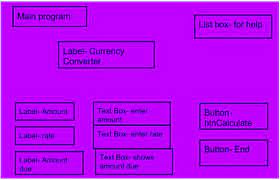Exploring Unit 6: Software Design and Development Essentials
Unit 6: Software Design and Development
Software design and development are crucial stages in the creation of any software application. Unit 6 of a software development course typically focuses on these key aspects to ensure that students have a solid understanding of how to design and build effective software solutions.
Key Topics Covered in Unit 6:
Software Design Principles: Students learn about fundamental principles of software design, such as modularity, abstraction, and encapsulation. They understand how to create well-structured and maintainable software systems.
Design Patterns: This section introduces students to common design patterns used in software development. They learn how to apply these patterns to solve recurring design problems effectively.
User Interface Design: Understanding user interface design is essential for creating user-friendly applications. Students explore principles of UI/UX design to ensure that their software interfaces are intuitive and visually appealing.
Software Development Life Cycle: Unit 6 covers the various phases of the software development life cycle, including requirements analysis, design, implementation, testing, and maintenance. Students gain insights into each stage’s importance in delivering successful software projects.
The Importance of Unit 6 in Software Development Education:
A thorough understanding of software design and development is critical for aspiring developers as it forms the foundation of creating robust and efficient software applications. Unit 6 equips students with the necessary knowledge and skills to tackle real-world development challenges confidently.
By mastering the concepts covered in this unit, students can enhance their problem-solving abilities, collaborate effectively with team members, and deliver high-quality software solutions that meet user requirements.
In Conclusion
Unit 6: Software Design and Development plays a vital role in shaping students into competent software engineers who can architect innovative solutions that drive technological advancements across various industries.
Exploring Key Concepts and Benefits of Unit 6 in Software Design and Development
- What are the key principles of software design covered in Unit 6?
- How do design patterns contribute to software development, as discussed in Unit 6?
- What is the significance of user interface design in software development, according to Unit 6?
- Can you explain the different phases of the software development life cycle taught in Unit 6?
- How does Unit 6 help students improve their problem-solving skills in software design and development?
- What role does collaboration play in successfully completing projects related to software design and development, as emphasized in Unit 6?
- In what ways does mastering Unit 6 concepts benefit aspiring developers in creating efficient software applications?
- How does understanding the principles covered in Unit 6 enable students to meet user requirements effectively?
What are the key principles of software design covered in Unit 6?
In Unit 6 of software design and development, students delve into the key principles that form the foundation of effective software design. These principles include modularity, abstraction, and encapsulation. Modularity emphasizes breaking down a system into independent components for easier maintenance and scalability. Abstraction focuses on hiding complex implementation details to simplify the understanding of a system’s functionality. Encapsulation involves bundling data and methods within a class to control access and ensure data integrity. Understanding and applying these principles are essential for creating well-structured, maintainable software systems that meet user needs efficiently.
How do design patterns contribute to software development, as discussed in Unit 6?
Design patterns play a significant role in software development, as emphasized in Unit 6 of the course. These patterns provide proven solutions to common design problems that developers encounter during the software development process. By understanding and applying design patterns effectively, developers can enhance the structure, scalability, and maintainability of their software systems. Design patterns promote code reusability, reduce development time, and improve overall code quality. They serve as a guide for developers to make informed design decisions and create robust software solutions that align with best practices in the industry. Mastering design patterns equips developers with valuable tools to streamline the development process and produce high-quality software applications.
What is the significance of user interface design in software development, according to Unit 6?
In Unit 6 of software design and development, the significance of user interface design in software development is emphasized as a crucial aspect that directly impacts the usability and user experience of an application. User interface design plays a pivotal role in ensuring that software interfaces are intuitive, visually appealing, and user-friendly. By focusing on user interface design principles, students learn how to create interfaces that enhance user interaction, improve accessibility, and ultimately contribute to the overall success of a software application.
Can you explain the different phases of the software development life cycle taught in Unit 6?
One frequently asked question in Unit 6 of software design and development courses is, “Can you explain the different phases of the software development life cycle taught in this unit?” In response, students delve into understanding the sequential stages of the software development life cycle, which typically include requirements analysis, design, implementation, testing, and maintenance. Each phase plays a crucial role in ensuring the successful delivery of a software project. Requirements analysis involves gathering and documenting user needs and system requirements. Design focuses on creating a blueprint for the software solution based on the gathered requirements. Implementation involves coding and building the actual software product. Testing verifies that the software functions correctly and meets user expectations. Maintenance ensures ongoing support, updates, and enhancements to keep the software relevant and efficient over time. Mastering these phases equips students with a comprehensive approach to developing high-quality software applications.
How does Unit 6 help students improve their problem-solving skills in software design and development?
In Unit 6 of software design and development, students can enhance their problem-solving skills through a structured approach to understanding and applying software design principles. By learning about design patterns, user interface design, and the software development life cycle, students are equipped with the knowledge and tools necessary to analyze complex problems and devise effective solutions. Unit 6 encourages students to think critically, break down problems into manageable components, and apply best practices in software design to address challenges systematically. Through hands-on projects and practical exercises, students have the opportunity to practice problem-solving techniques in a real-world context, preparing them to tackle diverse software development scenarios with confidence and creativity.
What role does collaboration play in successfully completing projects related to software design and development, as emphasized in Unit 6?
Collaboration plays a pivotal role in successfully completing projects related to software design and development, as emphasized in Unit 6. In this unit, students learn that effective collaboration among team members fosters creativity, enhances problem-solving capabilities, and ensures the seamless integration of diverse skill sets. By working together, individuals can leverage their unique strengths to overcome challenges, share insights, and collectively contribute to the project’s success. Collaboration not only promotes a cohesive workflow but also encourages communication, feedback exchange, and mutual support, ultimately leading to the delivery of high-quality software solutions that meet user requirements and industry standards.
In what ways does mastering Unit 6 concepts benefit aspiring developers in creating efficient software applications?
Understanding and mastering the concepts covered in Unit 6 of software design and development is highly beneficial for aspiring developers in creating efficient software applications. By gaining proficiency in software design principles, design patterns, user interface design, and the software development life cycle, developers can enhance their ability to create well-structured, maintainable, and user-friendly applications. This mastery enables developers to approach development challenges with a systematic and strategic mindset, leading to the delivery of high-quality software solutions that meet user requirements effectively. Ultimately, mastering Unit 6 concepts equips aspiring developers with the knowledge and skills necessary to excel in the ever-evolving field of software development.
How does understanding the principles covered in Unit 6 enable students to meet user requirements effectively?
Understanding the principles covered in Unit 6 of software design and development is crucial for enabling students to meet user requirements effectively. By grasping concepts such as software design principles, design patterns, user interface design, and the software development life cycle, students gain the necessary knowledge to create software solutions that align closely with user needs. Applying these principles allows students to design systems that are modular, maintainable, and user-friendly, ensuring that the final product not only meets but exceeds user expectations. Through a comprehensive understanding of these key principles, students can develop software applications that are intuitive, efficient, and tailored to address specific user requirements with precision.




